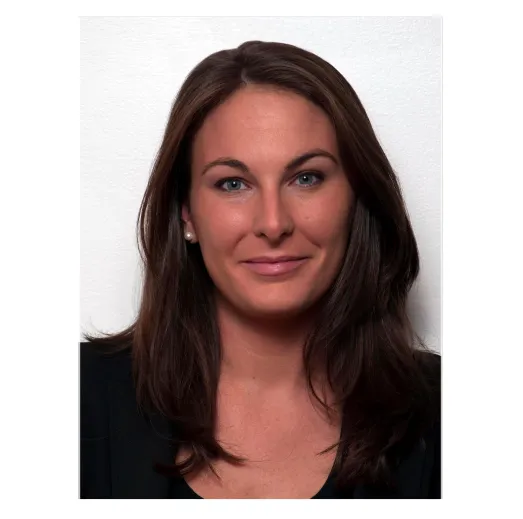From local to global, what new innovation strategies for large companies?
Interview with Marine HADENGUE, postdoctoral researcher in innovation management at i3-CRG


Interview with Marine Hadengue, postdoctoral researcher in innovation management at i3-Center for Research in Management. She is supervised by professors Florence Charue-Duboc (MIE Department, École Polytechnique, i3-CRG) and Sihem Ben Mahmoud-Jouini (HEC Paris, i3-CRG). Her research interests focus on new innovation processes of Western multinationals in emerging or developing economies. More specifically, her work focuses on reverse innovation.
What project are you currently working on??
An innovation is said to be reverse if it is first adopted in an emerging market before being brought back to a developed market (Govindarajan & Trimble, 2012; Immelt, Govindarajan & Trimble, 2009). The postdoctoral project proposes to enrich the reflection around the concept of reverse innovation by focusing in particular on the strategic choices of companies in terms of innovation processes on the international level.
The concept of reverse innovation is often unclear in the literature and researchers do not seem to agree on a definition or on the criteria for characterizing an innovation as reverse (Hadengue, de Marcellis-Warin & Warin, 2015; 2017). This confusion can be attributed to several important paradoxes that characterize reverse innovation. Indeed, if products developed for emerging markets meet the specific needs of consumers who make up these markets, how can they also be suitable for developed markets? Or, how does targeting emerging markets allow companies to produce disruptive innovations that are then also marketable in advanced markets? What adaptations are then necessary (in terms of business model or technological adaptations)?
Certainly, some innovations allow the expansion of original uses and can thus meet a need in the developed market. This is the case, for example, of the portable electrocardiograph, cheaper and easier to use, developed by General Electric for rural areas in India and subsequently marketed in the United States for emergencies and ambulances. But is this the case for all products? The example of the clay refrigerator launched by Mansukh Prajapati is a typical case of innovation that could not be marketed elsewhere than in India because of its frugality. To these examples should be added all the attempts to reverse failed innovations, unfortunately not or hardly reported in the literature.
It is thus clear that for Western multinationals, the emergence of high-growth markets and the paradigm shifts associated with them are shaking up their achievements. This raises a major question: what are the innovation strategies and processes that Western multinationals should implement in order to be both (1) responsive at the local level in emerging markets (2) while ensuring global integration of the innovations developed in this context?
The postdoctoral project aims to address all of these issues.
Govindarajan, V., & Trimble, C. (2012). Reverse innovation: a global growth strategy that could pre-empt disruption at home. Strategy & Leadership, 40(5), 5–11. https://doi.org/10.1108/10878571211257122.
Hadengue, M., de Marcellis-Warin, N., & Warin, T. (2015). Reverse Innovation and Reverse Technology Transfer: From Made in China to Discovered in China in the Pharmaceutical Sector. Management International, 19(4), 49–69.
Hadengue, M., de Marcellis-Warin, N., & Warin, T. (2017). Reverse Innovation: A Systematic Literature Review. International Journal of Emerging Markets, 12(2), 142–182.
Immelt, J. R., Govindarajan, V., & Trimble, C. (2009). How GE Is Disrupting Itself. Harvard Business Review, 87(10), 56–+.
Quelles évolutions voyez-vous pour ce projet ?
L'innovation inverse et plus généralement les stratégies d'innovation globale représentent les sujets les plus actuels et originaux du management international. En effet, la répartition géographique des innovations dans l’économie mondialisée est en train d’être bouleversée par le développement économique des pays émergents. Ainsi, il existe aujourd'hui un grand vide théorique et ce projet postdoctoral contribue à combler celui-ci.
Par ailleurs, ces recherches débouchent naturellement sur des applications directes pour les entreprises françaises et dans le monde, notamment parce que les stratégies d’innovation inverse et, plus généralement, d'innovation globale concernent toute entreprise ayant une ambition de se développer dans les économies émergentes.
Plan de diffusion des résultats
Certains résultats de recherche ont déjà été présentés à la European International Business Academy (EIBA) Conference. D'autres résultats seront présentés à la Innovation and Product development Conference (IPDMC) et à la conférence Atlas-AFMI et potentiellement à l'Association internationale de management stratégique (AIMS) et à R&D Management (en attente des décisions).
Trois articles scientifiques sont en rédaction/peaufinage.
https://www.linkedin.com/in/marine-hadengue-19036919/
Propos recueillis par Marie Claude Cléon
Back to the list